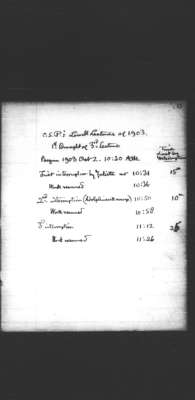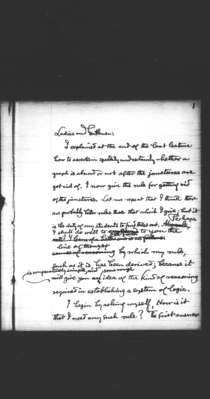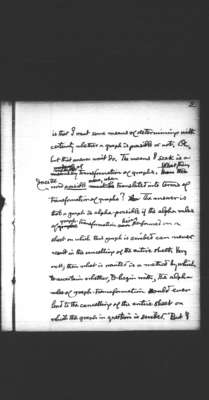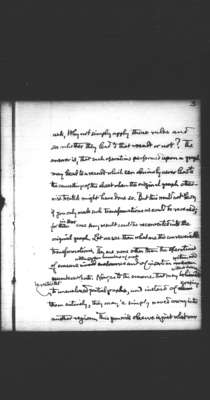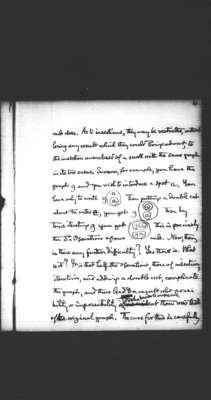Pages
1
C.S.P.'s Lowell Lectures of 1903. 1st Draught of 3rd Lecture Begin 1903 Oct 2. 10:30 A.M. Time Lost by
2
1
Ladies and Gentlemen:
I explained at the end of the last lecture how to ascertain speedily and certainly whether a graph is absurd or not after the junctures are got rid of. I now give the rule for getting rid of the junctures. Let me repeat that I think there are probably better rules than that which I give; but it is the duty of my students to find these out. My rule, until I learn of a better one is as follows: [??} of a reasoning Perhaps I shall do well to explain set forth to you the line of my thought by which my rule, such as it is, has been derived; because it is comparatively simple, and will give you some rough idea of the kind of reasoning required in establishing a system of logic.
I begin by asking myself, How is it that I need any such rule? The first answer
3
2
is that I want some means of determining with certainty whether a graph is possible or not. Oh, but that answer won't do. The means I seek is a means by method of transformation of graphs. What, then, does the word possible mean, when translated into terms of transformation of graphs? The answer is that a graph is alpha-possible if the alpha rules of graph-transformation can being performed on a sheet on which this graph is scribed can never result in the cancelling of the entire sheet. Very well; then what is wanted is a method by which to ascertain whether, to begin with, the alpha rules of graph-transformation could ever lead to the cancelling of the entire sheet on which the graph in question is scribed. But I
4
ask, Why not simply apply these rules and see whether they lend to that result or not? The answer is, that such operations performed upon a graph may lead to a result which can obviously never lead to the cancelling of the sheet when the original graph otherwise treated might have done so. But this would not be so, if you only made such transformations as could be reversed; for in that case any result could be reconverted into the original graph. Let us see then what are the unreversible transformations. They are none other than the operations of erasure within even numbers of cut [??? enclosures] and of insertion in even within odd numbers of cuts. Now, as to the erasure that may without [??] be limited be restricted to unenclosed partial graphs, and instead of erasing elim them entirely, they may be simply moved away into another region. This you will observe is just what our
5
rule does. As to insertions, they may be restricted, without losing any result which they could bring about, to the insertion unenclosed of a scroll with the same graph in its two areas. Suppose, for example, you have the graph g and you wish to introduce a spot a. You have only to write
g
The putting a double cut about the outer a, you get
g
Then by twice iterating g you get
This is precisely the 5th Operation of our rule. Now, then, is there any further difficulty? Yes there is. What is it? It is that half of the operations, those of insertion, iteration, and adding a double cut, complicate the graph, and thus lead to a result who[se] possibility or impossibility is less evident even harder to make out, than was that of the original graph. The cure for this is carefully
